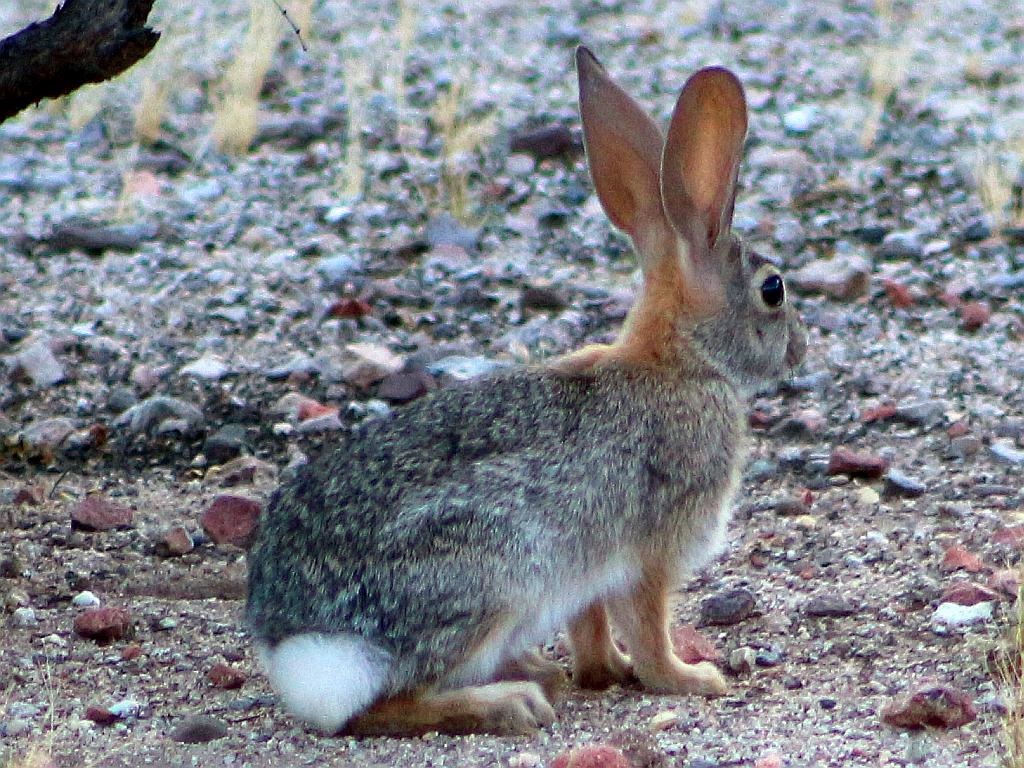I was in the courtyard late this afternoon and saw one of our little cottontail rabbits browsing in Verna’s rock and cactus garden. I had the Canon SL1 with me and the telephoto lens, so I snapped this quick shot of the bunny as it paused across the driveway: F5.6, ISO 640, 1/400 sec, 300mm and I did some minor post-processing of the image to compensate for the poor lighting conditions. Click on the image to enlarge.
Here is some info about this variety of cottontail rabbit from Wikipedia:
The desert cottontail (Sylvilagus audubonii), also known as Audubon’s cottontail, is a New World cottontail rabbit; a member of the family Leporidae.
The desert cottontail is quite similar in appearance to the European rabbit, though its ears are larger and are more often carried erect. It is also social among its peers, often gathering in small groups to feed. The desert cottontail uses burrows made by rodents rather than making its own. Like all cottontail rabbits, the desert cottontail has a rounded tail with white fur on the underside which is visible as it runs away. It is a light grayish-brown in color, with almost white fur on the belly. Adults are 33 to 43 cm (13 to 17 in) long and weigh up to 1.5 kg (3.3 lb). The ears are 8 to 10 cm (3.1 to 3.9 in) long, and the hind feet are large, about 7.5 cm (3.0 in) in length). There is little sexual dimorphism, but females tend to be larger than the males, but have much smaller home ranges, about 4,000 square metres (1 acre) compared with about 60,000 square metres (15 acres) for a male.
The desert cottontail is not usually active in the middle of the day, but it can be seen in the early morning or late afternoon. It mainly eats grass, but will eat many other plants, herbs, vegetables and even cacti. It rarely needs to drink, getting its water mostly from the plants it eats or from dew. Like most lagomorphs, it is coprophagic, re-ingesting and chewing its own feces: this allows more nutrition to be extracted.


